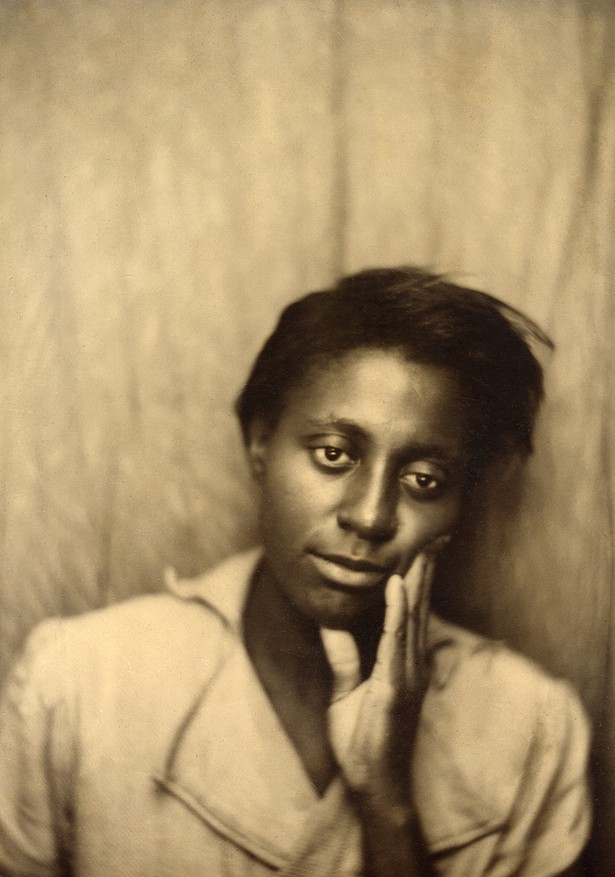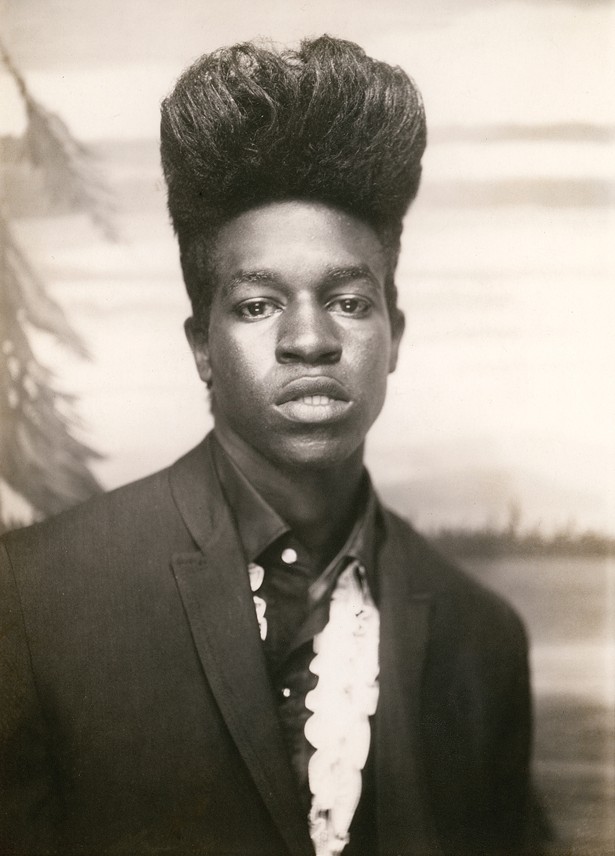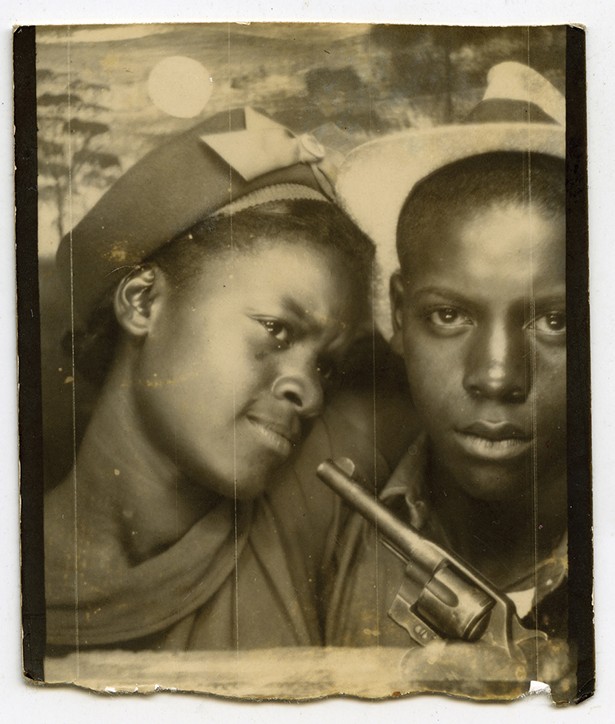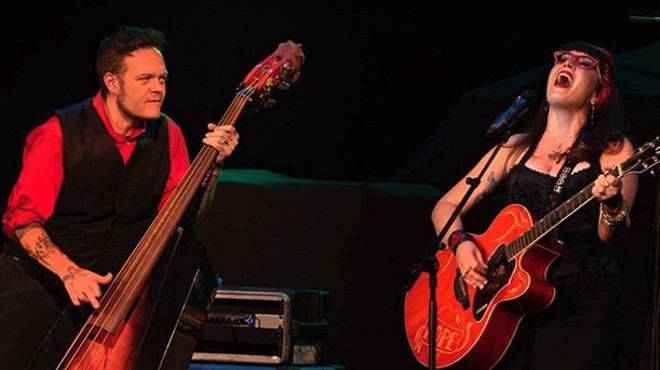
"It's portraiture without a photographer," remarks curator Brian Wallis, who organized the exhibition "Black Photobooth: From the Collections of Näkki Goranin and Oliver Wasow" at the Center for Photography at Woodstock. The show will continue until June 4. (Incidentally, the center recently moved to Kingston.)
Long before Polaroids, photobooths supplied pictures—usually a small strip of four, in black and white—within three minutes, for a nominal fee. The camera would "shoot" at predetermined intervals, with a bright flash.
The booths were intimate places, with one adjustable metal stool. Two people could crowd together, or even more, but usually they were lovers or siblings. Photos taken by professional photographers tended to be stiff and posed. For a quarter, one could be looser, more experimental. The subject might be off-center, or turn away from the camera. (One woman shows the back of her head, with an elegant terraced coiffure.)A Russian Jew named Anatol Josephewitz (who later shortened his name to Josepho) came up with the concept of the photobooth while living in Shanghai in 1921. He emigrated to the US, patented his machine, and set up the Photomaton Studio in New York City, drawing as many as 7,500 customers a day. In 1926 Josepho sold the rights to his invention for $1 million (equivalent to nearly $20 million today), and photobooths were rolled out around the world.
"It's also an interesting technological experiment, because you had a fairly high density of silver in the printing, which made it richly contrasted," Wallis explains. The eyes often have a profound inner gleam. Photobooth images resemble a contemporary cinematic phenomenon: noir films. The photos were quite small; the figures were almost postage stamp size. Sarrah Danziger, a printer associated with the gallery, has made precise, handsome enlargements of the tiny photographs.
For most of the 20th century, photo studios were segregated, expensive, and unavailable in rural areas. For many Black families, photobooths became a source of personal archives. Photos were gathered into albums, or collaged together inside frames. Street photographers often show Black life from the outside, but these images display how the subjects saw themselves. "Black Photobooth" does have a voyeuristic element, revealing the private, sometimes romantic moments of strangers. (Art critics have pointed out the similarity between a photobooth and a confession booth.) One young man holds a revolver, tilted towards the face of his girlfriend. Judging from their hats, they are consciously imitating Bonnie and Clyde.
Our national music has been heavily influenced by African-American culture, but Blacks have been largely excluded from the visual arts. Within the ubiquitous photo booth, the subjects in "Black Photobooth" show ceaseless experimentation: a jazz of the face.
This is a type of "vernacular photography," which Wallis defines as "history from the bottom up." Unless there's a notation on the back, there's no way of knowing exactly when or where these photos were taken. The curator estimates that they extend from the 1920s to the 1980s (including one heroic feminine afro). Also, pretty much all the photos are anonymous—and therefore untitled.
This show is taken from the collections of two photographers, who draw on this populist art form for inspiration. In 2008 Nakki Goranin published American Photobooth, the first photography book on this phenomenon. Oliver Wasow is known for archaic-looking portraits, some with florid backdrops.
The internet has become a mecca for photobooth enthusiasts. Auctions and eBay sell the photographs, which are displayed on sites like Pinterest and Tumblr. In a sense, these photos were the predecessors of today's iPhone portraiture. "IPhone pictures have the same type of intimacy and self-fashioning as the photobooth portraits," Wallis observes. The whole world has become a photobooth.














